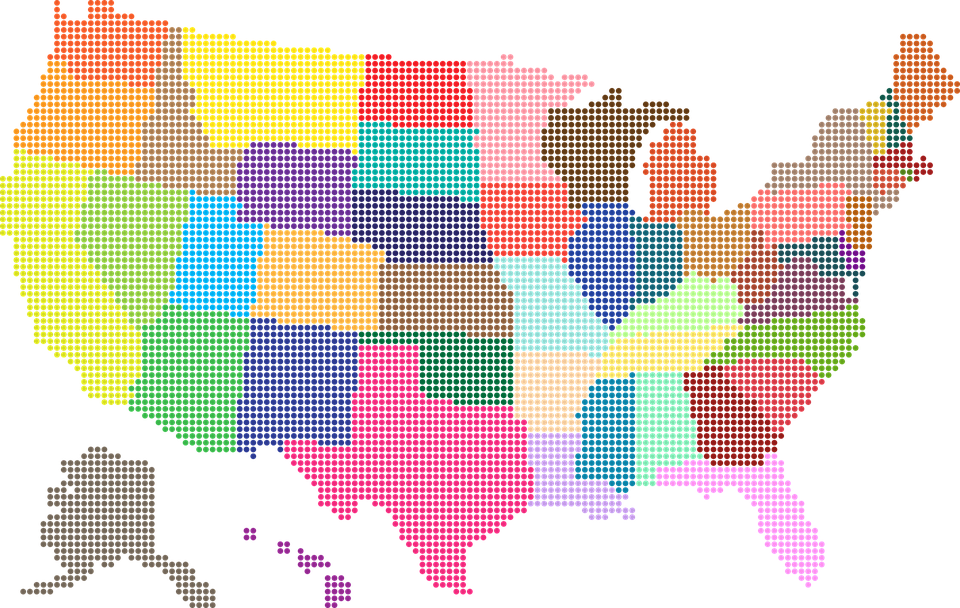By Nicole DiGiose, content editor
In a first-of-its-kind study, researchers at Columbia University discovered that energy harvested from the evaporation of water in U.S. lakes and reservoirs could power nearly 70% of the nation’s power grids, generating 325 gigawatts of electricity. Although it’s still limited to experiments in the lab, evaporation-harvested power could potentially be made on demand any time, overcoming the intermittency issues plaguing solar and wind power.

Southern and western states have the greatest capacity to produce evaporation-generated power from lakes and reservoirs. Image source: Pixabay.
The study was designed to test how much power could be generated by using what the researchers dubbed “the Evaporation Engine ,” a machine developed by Columbia University biophysicist Ozgur Sahin. To control humidity, the engine has a shutter that opens and closes, prompting bacterial spores to expand and contract.
“We have the technology to harness energy from wind, water, and the sun, but evaporation is just as powerful,” said Sahin . “We can now put a number on its potential.”
According to the researchers, evaporation can be generated only when necessary, compared to traditional renewable energy sources, which are typically variable and reliant upon outside sources, such as sunshine and wind. This means that the normal solution to variable energy generation is to combine it with battery storage, and while this may be efficient, it requires the use of expensive, and sometimes toxic, materials.
“Evaporation comes with a natural battery,” the study’s lead author, Ahmet-Hamdi Cavusoglu, told Clean Technica . “You can make it your main source of power and draw on solar and wind when they’re available.”
What’s more, the study found that evaporation technology could also save water. The researchers estimated that half of the water naturally lost from lakes and reservoirs through evaporation could be saved during the process of harvesting evaporation for energy, which came to nearly 25 trillion gallons of water per year, or about one-fifth of the water that Americans consume in a year.
Of course, areas with growing populations and sunnier weather can best capitalize on evaporation’s capacity to generate power while reducing water waste. This is in part because evaporation packs more energy in warm and dry conditions. States such as California, Nevada, and Arizona would likely benefit most.
To simplify their model to test evaporation’s potential, the researchers limited their calculations to the U.S., where weather station data is accessible, and excluded locations such as farmland, rivers, and coastlines in order to limit errors associated with modeling complex interactions. Currently, the researchers are working to improve the energy efficiency of their materials and plan to eventually test their concept on a lake, reservoir, or a greenhouse, where the technology could be useful in making power while saving water.
Advertisement
Learn more about Electronic Products Magazine





